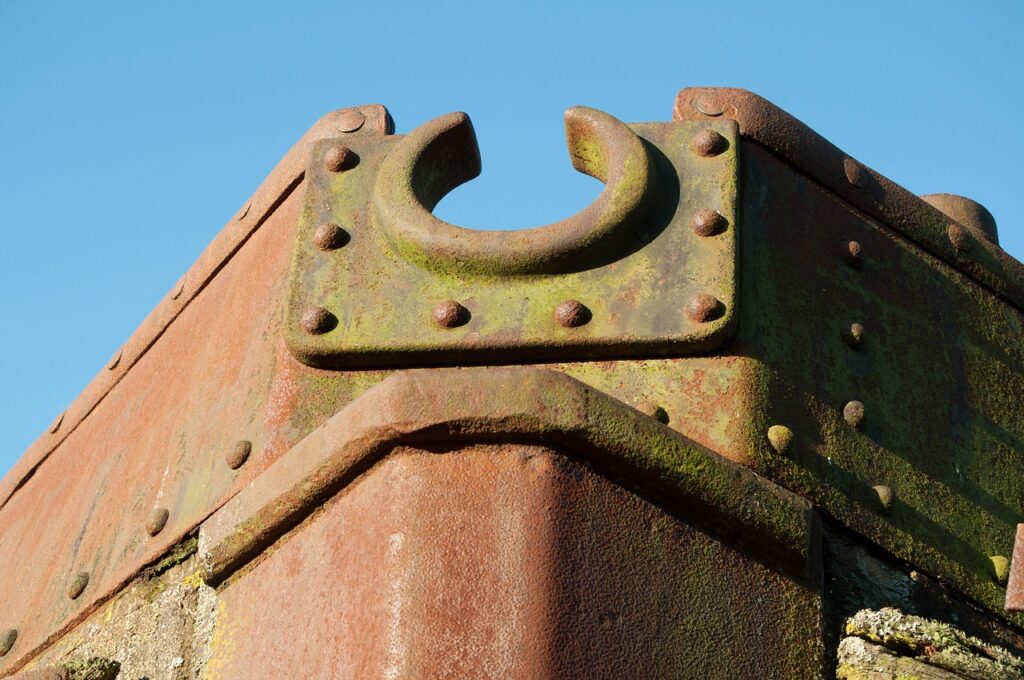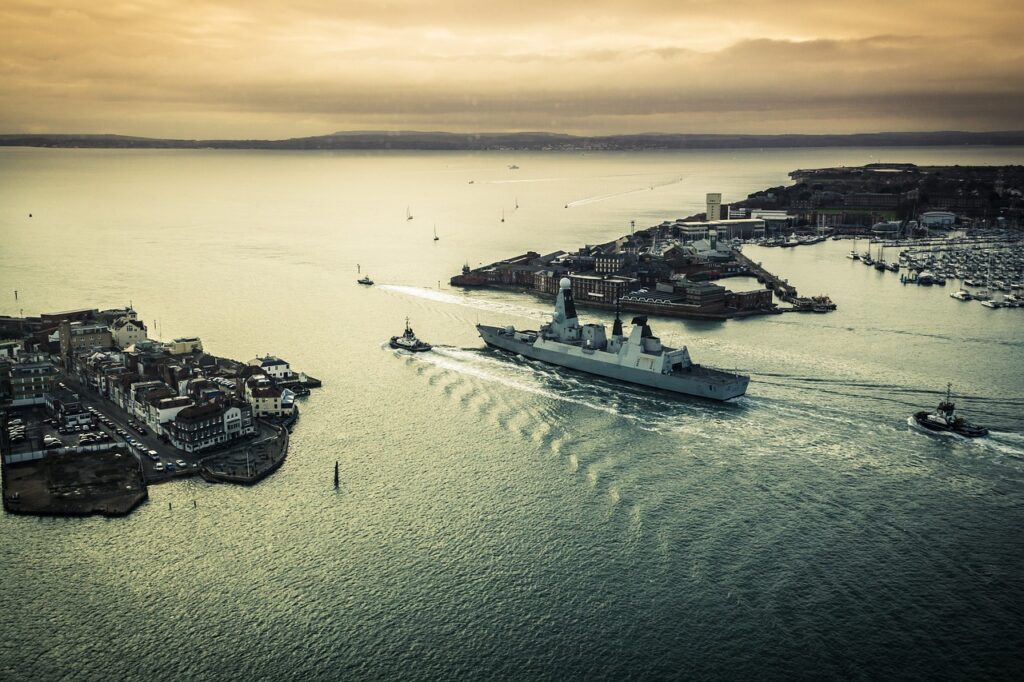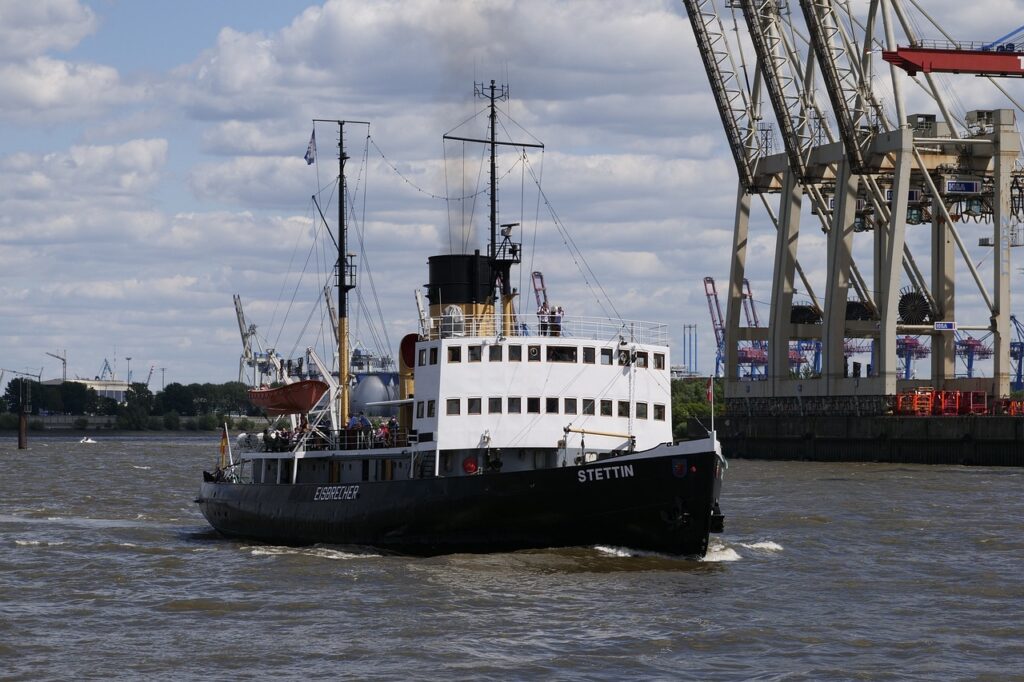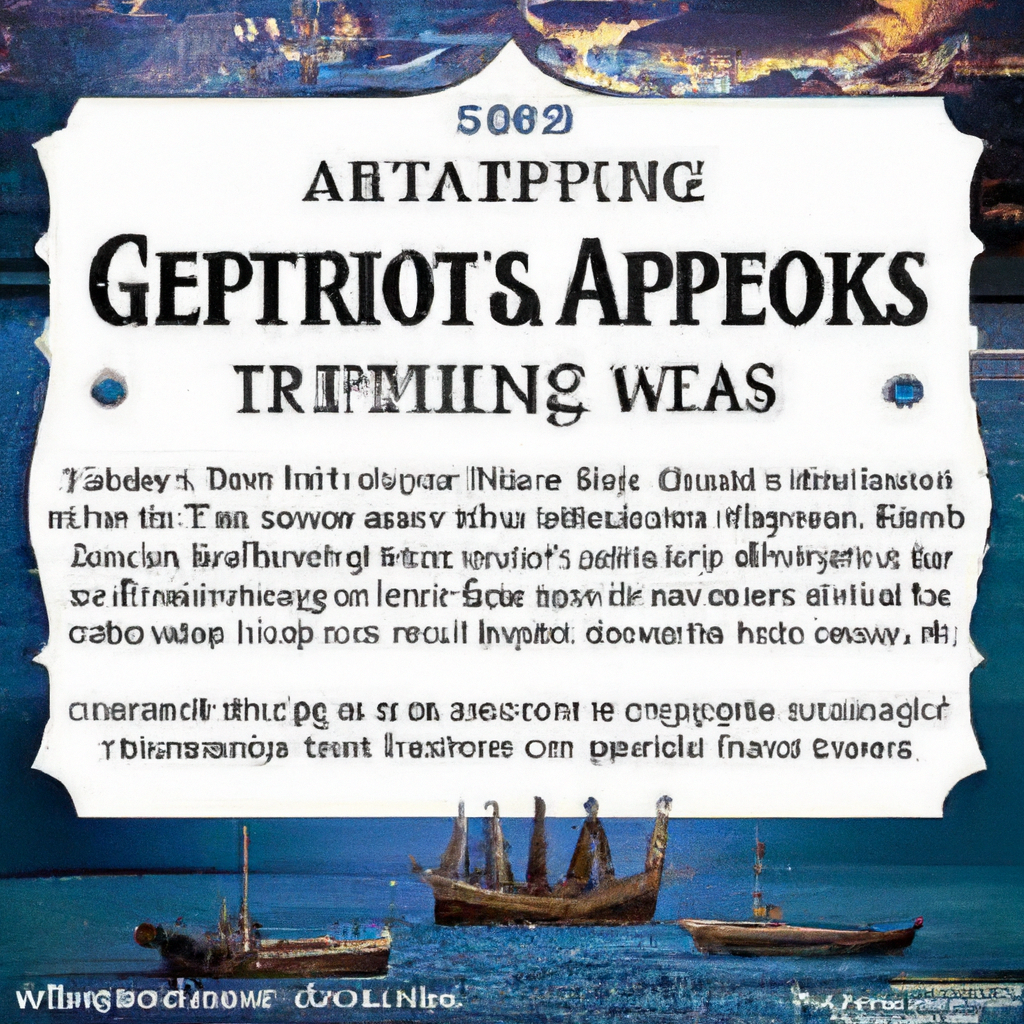Join us as we embark on a fascinating journey through the rich maritime history of the Greek Archipelago. Discover the enchanting tales of ancient seafarers, fearless pirates, and legendary naval battles that have shaped this beautiful cluster of islands. Immerse yourself in the captivating stories of Greek mythology, where gods and goddesses ruled the seas. From the mythical adventures of Odysseus to the historical significance of naval conquests, the Greek Archipelago offers a treasure trove of intriguing maritime lore waiting to be explored.

Ancient Seafaring in the Greek Archipelago
The Greek Archipelago, with its countless islands and expansive coastline, has a rich and fascinating maritime history that dates back thousands of years. The ancient Greeks were pioneers in the field of seafaring, developing advanced navigation skills and creating trade networks that spanned the Mediterranean. The origins of Greek seafaring can be traced back to the Minoans, a civilization that flourished on the island of Crete around 2000 BCE.
The Origins of Greek Seafaring
The Minoans, renowned for their maritime prowess, were the first civilization to establish an extensive trade network in the Aegean Sea. They constructed technologically advanced ships, equipped with sails and oars, allowing them to navigate and explore the vast expanse of the Mediterranean. Through their seafaring endeavors, the Minoans not only established trading connections with neighboring regions but also disseminated their culture and influence throughout the ancient world.
Development of Maritime Trade
With the rise of the Minoans, maritime trade became an integral part of Greek society. Greek city-states developed their own merchant fleets and began to engage in long-distance trade, importing and exporting goods from various regions. From the islands of the Aegean to the coastlines of Asia Minor, the Greeks established lucrative trade routes, which propelled their economy and fostered cultural exchange. It was during this period that the Greek Archipelago truly became a hub of maritime activity.
Technology and Navigation Skills
Greek seafarers were innovative in both shipbuilding techniques and navigation skills. The construction of triremes, warships with three rows of oars, revolutionized naval warfare, giving the Greeks a significant advantage in conflicts at sea. These warships were sleek and fast, capable of engaging in maneuverable tactics on the open water.
In terms of navigation, the Greeks relied on the stars and celestial observations to guide their journeys. They developed a rudimentary compass known as a “groma,” which enabled them to determine their direction relative to the stars. Additionally, they utilized landmarks, currents, and natural phenomena to navigate through unfamiliar waters. These advancements in technology and navigation laid the foundation for subsequent maritime achievements in Greek history.
The Minoans: Masters of the Sea
The Minoans, an ancient civilization that thrived on the island of Crete, were pioneers in maritime exploration and trade. From around 2000 BCE, they dominated the Aegean Sea with their highly advanced seafaring abilities. The Minoans constructed impressive ships, equipped with both sails and oars, which allowed them to navigate the vast Mediterranean and establish trade networks throughout the region.
The Minoan Civilization
The Minoans, named after the legendary King Minos, inhabited Crete during the Bronze Age. They created a sophisticated society characterized by intricate palaces, colorful frescoes, and a prosperous economy built on sea trade. The Minoans were skilled in agriculture, pottery, metallurgy, and other crafts. They left a lasting cultural legacy, which greatly influenced subsequent Greek civilizations.
Minoan Trade Routes
The Minoans established extensive trade networks, connecting Crete to various regions in the Mediterranean. They traded in commodities such as timber, metals, olive oil, and wine, which they exchanged for luxury goods like ivory, copper, gold, and precious stones. The Minoans reached as far as Egypt, Mesopotamia, and Anatolia, becoming one of the most influential trading powers of the time.
Maritime Achievements
The Minoans’ maritime achievements were truly remarkable. Not only did they possess advanced shipbuilding techniques, but they also had a deep understanding of navigation and seafaring. Their ships, with their characteristic sail and oar hybrid design, allowed them to travel great distances with ease. The Minoans were also proficient in navigation, using natural landmarks, star observations, and rudimentary compasses to guide their vessels. Their maritime expertise laid the groundwork for future Greek seafarers and contributed to the development of maritime trade in the region.
The Mycenaeans: Maritime Warriors
Following the decline of the Minoans, another powerful civilization emerged in ancient Greece – the Mycenaeans. They were renowned for their military prowess and their domination of the Mediterranean, particularly during the Late Bronze Age.
The Rise of the Mycenaeans
The Mycenaeans established their stronghold in the southern part of the Greek mainland, primarily in the region known as Mycenae. They expanded their influence through conquest and territorial expansion, eventually becoming the dominant power in the Greek Archipelago.

Mycenaean Naval Power
The Mycenaeans recognized the strategic importance of maritime power and invested heavily in the development of their navy. They constructed robust warships, known as “long ships” or “war galleys,” which were well-suited for both coastal defense and offensive actions. The Mycenaean navy played a pivotal role in safeguarding their maritime trade routes, protecting their territories, and projecting their power throughout the Mediterranean.
Seafaring in the Trojan War
One of the most famous episodes in ancient Greek history is the Trojan War, a conflict immortalized in Homer’s epic poems, the Iliad and the Odyssey. The Mycenaeans played a crucial role in the war, utilizing their naval strength to besiege the city of Troy. They employed their superior ships and naval tactics to transport their armies, engage in naval battles, and maintain a blockade around the city. The Mycenaean involvement in the Trojan War highlighted the importance of maritime power in ancient Greece and solidified their reputation as formidable seafarers.
The Classical Era: Naval Supremacy
The Classical era marked a period of naval supremacy for the ancient Greeks, with the city-state of Athens emerging as a dominant maritime power.
The Athenian Navy
The Athenian navy, known as the “Wooden Wall,” was the backbone of Athens’ maritime strength. It consisted of triremes – warships propelled by oarsmen arranged in three rows. The Athenians recognized the importance of maintaining a formidable naval force to protect their trade routes, defend their allies, and project their influence over the Aegean Sea.
The Persian Wars
One of the most significant events during the Classical era was the Persian Wars, a series of conflicts between the Greek city-states and the Persian Empire. The Greeks, led by Athens, relied heavily on their navy to resist the Persian invasion. The Battle of Marathon in 490 BCE and the Battle of Plataea in 479 BCE showcased the naval prowess of the Greeks.

The Battle of Salamis
The Battle of Salamis, fought in 480 BCE, stands out as a pivotal naval battle during the Persian Wars. The Athenian navy, under the command of Themistocles, engaged the Persian fleet near the island of Salamis. Through clever tactics and superior seamanship, the Greeks achieved a decisive victory, thwarting the Persian invasion and securing their naval dominance in the region.
Hellenistic Maritime Expansion
With the decline of the Persian Empire, the Greeks experienced a period of significant maritime expansion and cultural diffusion under the leadership of Alexander the Great.
The Conquests of Alexander the Great
Alexander the Great’s military campaigns transformed the Greek Archipelago into an empire that spanned from Greece to Egypt and as far east as India. The conquests of Alexander resulted in the blending of Greek and Eastern cultures and the spread of Hellenistic influence throughout the Mediterranean and beyond.
Maritime Trade in the Eastern Mediterranean
The Hellenistic period witnessed a flourishing maritime trade in the Eastern Mediterranean. The Greek islands played a vital role as hubs of commerce, connecting various regions and facilitating the exchange of goods and ideas. Egyptian ports, such as Alexandria, became major centers of trade, linking the Greek world to Africa and the Red Sea.
Ptolemaic and Seleucid Navies
After Alexander’s death, his empire was divided among his generals, resulting in the establishment of the Ptolemaic and Seleucid kingdoms. These successor states maintained powerful navies, protecting their maritime territories, engaging in trade, and projecting their influence across the Mediterranean. The maritime strength of the Ptolemaic dynasty in Egypt, for example, ensured the prosperity and stability of their kingdom for centuries.

The Roman Era: Maritime Dominance
The rise of the Roman Empire brought about a significant shift in maritime power in the Mediterranean. The Romans, building on the foundations laid by the Greeks, established a navy that would dominate the region for centuries.
The Roman Navy
The Roman navy, known as the Classis Romana, was a formidable maritime force characterized by its vast fleet and highly skilled sailors. The Romans recognized the strategic importance of controlling the seas and invested heavily in their naval capabilities. They employed triremes and other types of warships, which were instrumental in maintaining their dominance and expanding their empire.
Piracy and Naval Warfare
Naval battles and piracy were persistent challenges during the Roman era. Pirates, known as “Cilicians,” plagued the seas, disrupting trade routes and threatening maritime security. The Romans launched numerous campaigns to combat piracy and establish control over the Mediterranean. Notable Roman leaders, such as Pompey the Great, successfully confronted these threats, ultimately suppressing piracy and restoring stability to the region.
Maritime Commerce and Trade Routes
The Roman Empire facilitated extensive maritime trade, connecting its vast territories and fostering economic prosperity. The Greek islands served as crucial intermediaries in this network, linking the Roman heartland to the distant corners of the empire. The maritime trade routes flourished, facilitating the exchange of goods, ideas, and culture throughout the Mediterranean.
Byzantine Maritime History
After the fall of the Western Roman Empire, the Eastern Roman Empire, commonly known as the Byzantine Empire, continued to play a significant role in the maritime history of the Greek Archipelago.

The Byzantine Empire and its Navy
The Byzantine Empire inherited the Roman naval tradition and continued to prioritize maritime power. The imperial fleet protected Byzantine territorial waters, defended against external threats, and ensured the safety of maritime trade routes. The Byzantines built upon the Roman naval legacy, developing new ship designs and advancing naval warfare tactics.
Maritime Defense and Fortifications
The Byzantines constructed numerous fortifications and defensive structures along the coastlines of the Greek Archipelago. These fortresses, including the famous walls of Constantinople, safeguarded strategic harbors and served as crucial deterrents against potential invaders. The Byzantines recognized the importance of maintaining control over the seas and protecting their maritime territories from external aggression.
The Byzantine Golden Age of Shipbuilding
During the Byzantine era, shipbuilding reached new heights of excellence. The Byzantines constructed highly advanced vessels, incorporating technological innovations such as lateen sails and dromons – war galleys equipped with Greek fire, a powerful incendiary weapon. These ships propelled the Byzantine navy to prominence and ensured their dominance in the Mediterranean.
The Ottoman Era: Naval Conflicts
The Ottoman Empire, known for its formidable naval power, shaped the maritime history of the Greek Archipelago during the medieval and early modern periods.
The Ottoman Empire and Naval Power
The Ottoman Empire, under the reign of Mehmed the Conqueror, established control over the Byzantine Empire, marking the end of Byzantine maritime dominance. The Ottomans recognized the strategic value of controlling the seas, and they invested heavily in their navy, known as the Kapudan Pasha. The Ottoman navy played a crucial role in expanding the empire, protecting its territories, and projecting its power in the Mediterranean.
The Battle of Lepanto
The Battle of Lepanto in 1571 was a crucial moment in naval history and a significant conflict between the Ottomans and a coalition of Christian forces, including the Venetians, Spaniards, and Papal States. The Ottomans, with their powerful navy, faced off against the Christian alliance in a fierce battle in the Gulf of Patras. Despite the numerical advantage of the Ottoman fleet, the Christian coalition emerged victorious, significantly weakening Ottoman naval power and halting their expansion into the Mediterranean.
Naval Activities during the Greek War of Independence
During the Greek War of Independence in the early 19th century, naval warfare played a pivotal role in the liberation of Greece from Ottoman rule. Greek naval forces, led by charismatic leaders such as Andreas Miaoulis, engaged in daring naval operations, disrupting Ottoman supply lines and defending strategic coastal areas. The Greek navy’s successes not only bolstered the morale of the Greek people but also contributed significantly to the ultimate success of the independence movement.
Modern Maritime Heritage
The maritime heritage of Greece extends far beyond its ancient history and continues to flourish in the modern era.
Traditional Greek Fishing and Seafaring
Fishing has been an integral part of Greek culture and economy for centuries, with many coastal communities relying on this industry for their livelihood. Traditional fishing methods and practices, passed down through generations, continue to be preserved and celebrated today. Additionally, maritime tourism and seafaring activities, such as yacht charters, have become increasingly popular, allowing visitors to experience the beauty of the Greek Archipelago firsthand.
Maritime Museums and Exhibitions
Various maritime museums and exhibitions throughout Greece showcase the country’s rich nautical history. These institutions offer a glimpse into the ancient seafaring traditions, as well as the naval conflicts and trade routes that shaped the region’s history. From ancient artifacts to naval artifacts and ship models, these museums provide a comprehensive overview of Greece’s maritime heritage.
Contemporary Greek Maritime Industry
The Greek maritime industry remains a vital component of the country’s economy. Greece is known for its shipping prowess, with Greek-owned vessels accounting for a significant portion of the world’s merchant fleet. The Greek shipping industry continues to thrive, contributing to the nation’s economic prosperity and upholding its long-standing maritime legacy.
Preserving the Maritime Legacy
Efforts to preserve and protect Greece’s rich maritime legacy are ongoing, ensuring that future generations can appreciate and learn from this extraordinary history.
Maritime Conservation Efforts
Maritime conservation organizations and initiatives work tirelessly to safeguard underwater archaeological sites, protect marine ecosystems, and promote sustainable practices in the maritime industry. These efforts aim to preserve the historical and ecological significance of Greece’s waters, allowing future generations to experience and appreciate the country’s maritime heritage.
Underwater Archaeological Sites
Greece is home to an abundance of underwater archaeological sites, submerged remnants of ancient civilizations that have captured the imagination of scholars and enthusiasts alike. These sites, including shipwrecks, submerged settlements, and ancient ports, provide invaluable insights into ancient seafaring and everyday life. Archaeological expeditions and ongoing research are helping to uncover and preserve these submerged treasures.
The UNESCO World Heritage List
Several sites related to Greece’s maritime history have been recognized and listed as UNESCO World Heritage Sites. These include the ancient city of Rhodes, with its impressive harbor and defensive walls, and the archaeological site of Delos, a significant center of commerce and religion in ancient times. The inclusion of these sites on the prestigious UNESCO list highlights the global importance of Greece’s maritime heritage.
In conclusion, the maritime history of the Greek Archipelago is a fascinating tale of exploration, trade, naval conflicts, and cultural exchange. From the Minoans and their mastery of the Mediterranean to the naval supremacy of Classical Greece and the Ottoman Empire, seafaring has played a crucial role in shaping the region’s history. Today, Greece’s maritime legacy continues to thrive, with traditional fishing practices, maritime museums, and a vibrant maritime industry upholding and preserving this extraordinary heritage for future generations.
